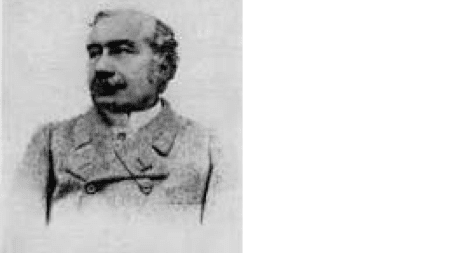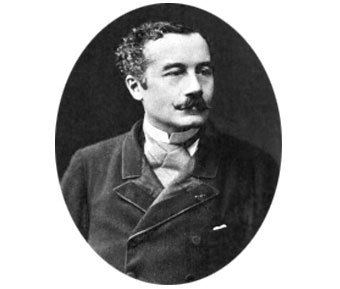Name Paul-Emile de | ||
 | ||
Born 18 April 1838Cognac, France ( 1838-04-18 ) Died May 28, 1912, Paris, France | ||
Paul-Émile Lecoq de Boisbaudran, also called François Lecoq de Boisbaudran (18 April 1838 – 28 May 1912), was a French chemist known for his discoveries of the chemical elements gallium, samarium and dysprosium.
Contents
Paul Émile Lecoq de Boisbaudran
Biography

De Boisbaudran belonged to the ancient Protestant nobility of considerable fortune, which, however, disappeared after the revocation of the Edict of Nantes. The property of de Boisbaudran was sold; and his father Paul started a wine business at Cognac. The venture required the energy of the entire family, including young Lecoq. His mother was well educated and taught him history and foreign languages, so he was fluent in English. He also studied some courses of the École Polytechnique by reading the syllabus and fitted up a modest laboratory, where he began to repeat the experiments which he had read in books. In this laboratory he made most of his early discoveries, including the isolation of gallium.

De Boisbaudran’s early work focused on supersaturation of solutions. He showed that supersaturation is destroyed by contact with crystals of an isomorphous salt, and that it is possible to prepare solutions of anhydrous salts in a supersaturated condition (1866–1869). In 1874 he found that octahedral faces are less readily soluble than cubic faces for ammonium alum crystals. His chief work, however, was in spectroscopy and its application to rare earth elements. He analysed spectra of 35 elements, using the Bunsen burner, electric spark or both to induce luminescence and in this way discovered the lanthanides samarium (1880), dysprosium (1886) and europium (1890). He also isolated gadolinium in 1885, the element which was previously discovered in 1880 by J.C. Galissard de Marignac.

The most notable work of de Boisbaudran was, however, discovery of gallium. In 1875 he had obtained several milligrams of gallium chloride, extracted from a sample of 52 kg of mineral ore, and found new spectroscopic lines in it. He continued the experiments using several hundred kilograms of zinc ore from the Pyrenees and in the same year isolated more than one gram of the pure metal by electrolysing a solution of its hydroxide in potassium hydroxide. Later he prepared 75 grams of gallium using more than 4 tonnes of the ore. De Boisbaudran calculated the atomic weight of gallium as 69.86, close to the currently accepted value of 69.723(1). For this work, he received the cross of the Cross of the Legion of Honour, the Davy Medal (1879) and the Prix Lacaze of 10,000 francs. He was elected a foreign member of the Royal Society in 1888. It was later claimed that Lecoq had named the element after himself, since gallus is the Latin translation of the French le coq, but Lecoq denied this in an article of 1877 and asserted that the name originates from Latin for Gaul, Gallia. The existence of gallium had been predicted during 1871 by Dmitri Mendeleev, who called it eka-aluminium, and its discovery was a boost for Mendeleev's theory of the periodic table.

Lecoq contributed more to the development of the periodic classification of elements by proposing, soon after its discovery, that argon was a member of a new, previously unsuspected, chemical series of elements, later to become known as the noble gases. After 1895, family duties and failing health hindered his work. He suffered from ankylosis of the joints and died in 1912, at the age of 74.


